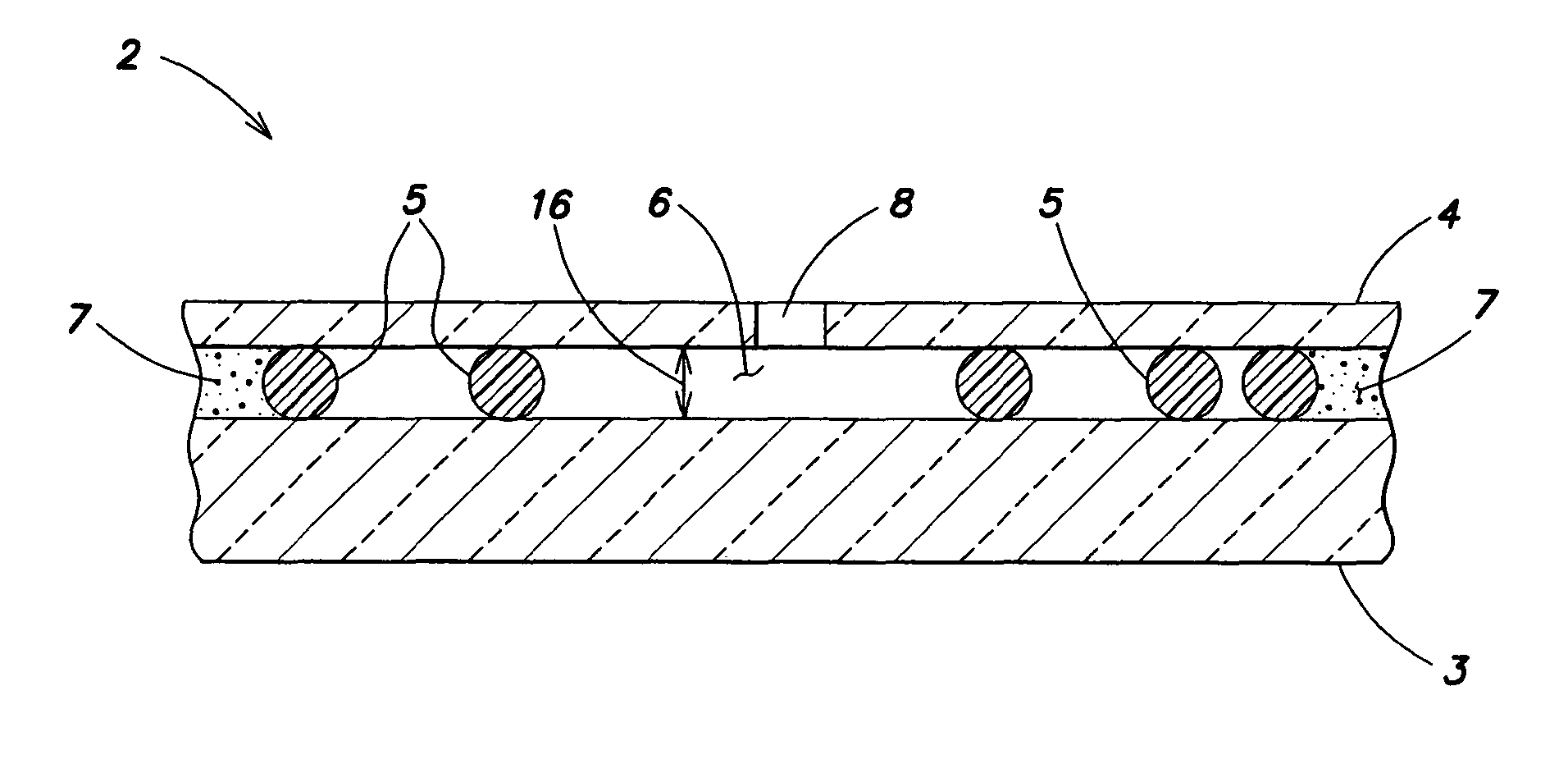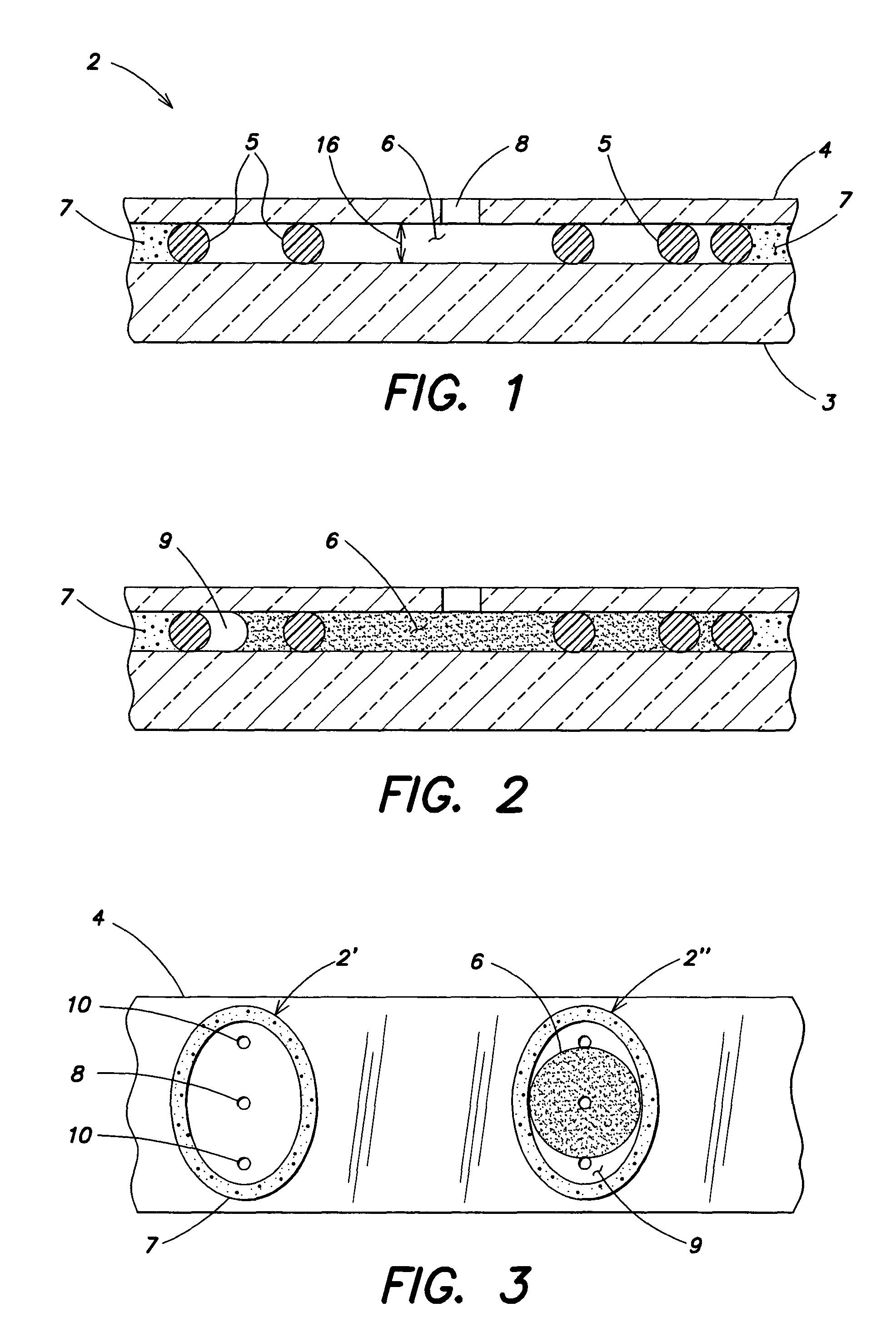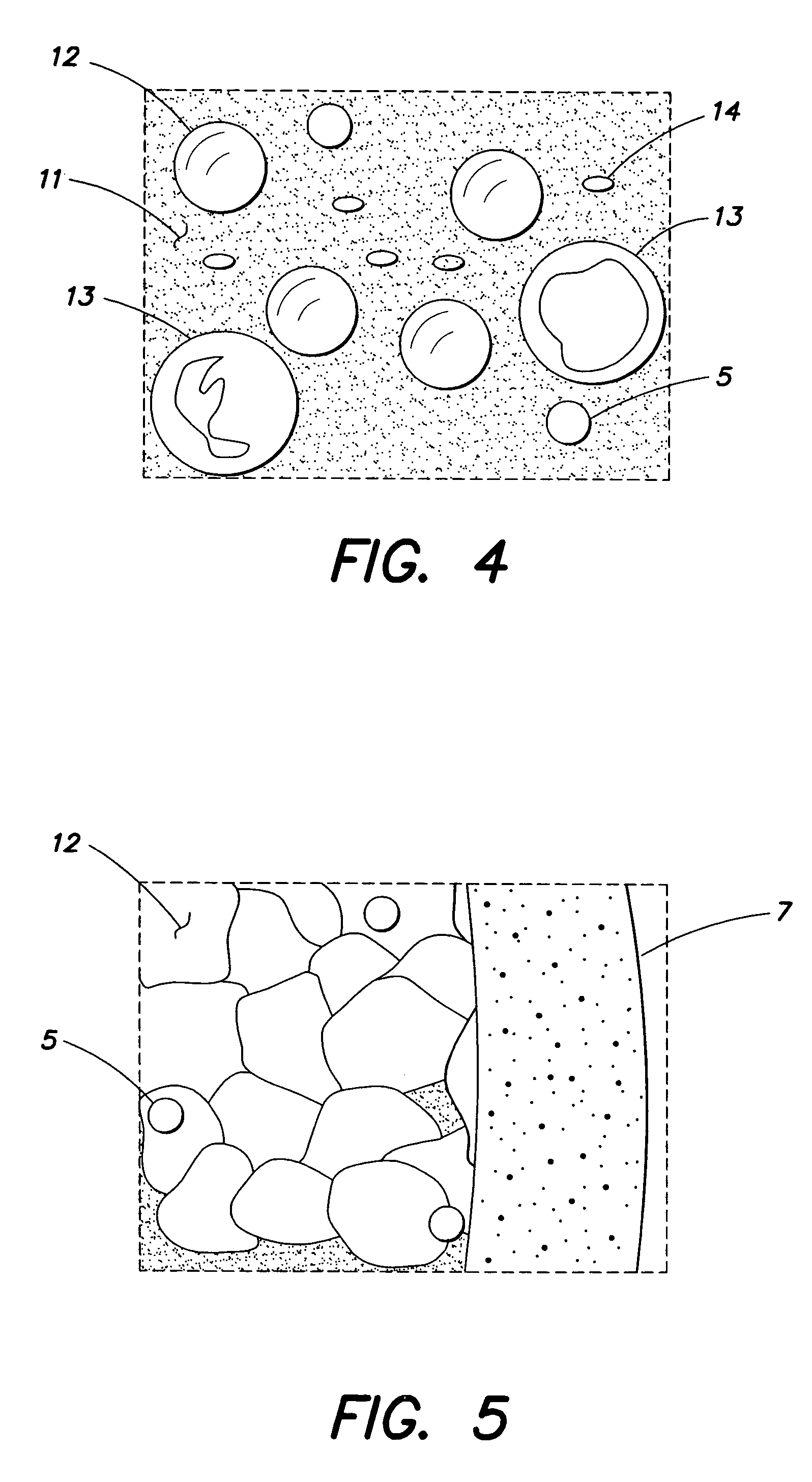Apparatus and method for performing counts within a biologic fluid sample
a technology apparatus, which is applied in the field of chambers for analyzing biologic fluids, can solve the problems of preventing the accurate initial measurement or later calculation of sample quantity, and achieves the effects of high mobility, low cost, and simple structur
- Summary
- Abstract
- Description
- Claims
- Application Information
AI Technical Summary
Benefits of technology
Problems solved by technology
Method used
Image
Examples
Embodiment Construction
[0024]Referring to FIGS. 1-5, the present apparatus for analyzing biologic fluids includes one or more chambers 2 defined by a first planar member and a second planar member, separated from one another by a distance referred to hereinafter as the chamber height 16. At least one of the first planar member and the second planar member is sufficiently transparent so that a biologic fluid sample disposed within a chamber 2 may be imaged. To facilitate the description of the present invention, the planar members are referred to hereinafter as the “top” planar member 4 and the “bottom” planar member 3. The top planar member 4 hereinafter is also described as being transparent. In alternative embodiments, the bottom planar member 3 may be transparent rather than the top planar member 4, or in addition to the top planar member 4.
[0025]The planar members 3, 4 can be formed from a variety of materials, having different or identical properties. Patent Cooperation Treaty Patent Publication No. ...
PUM
| Property | Measurement | Unit |
|---|---|---|
| height | aaaaa | aaaaa |
| chamber height | aaaaa | aaaaa |
| height | aaaaa | aaaaa |
Abstract
Description
Claims
Application Information
 Login to View More
Login to View More - R&D
- Intellectual Property
- Life Sciences
- Materials
- Tech Scout
- Unparalleled Data Quality
- Higher Quality Content
- 60% Fewer Hallucinations
Browse by: Latest US Patents, China's latest patents, Technical Efficacy Thesaurus, Application Domain, Technology Topic, Popular Technical Reports.
© 2025 PatSnap. All rights reserved.Legal|Privacy policy|Modern Slavery Act Transparency Statement|Sitemap|About US| Contact US: help@patsnap.com



